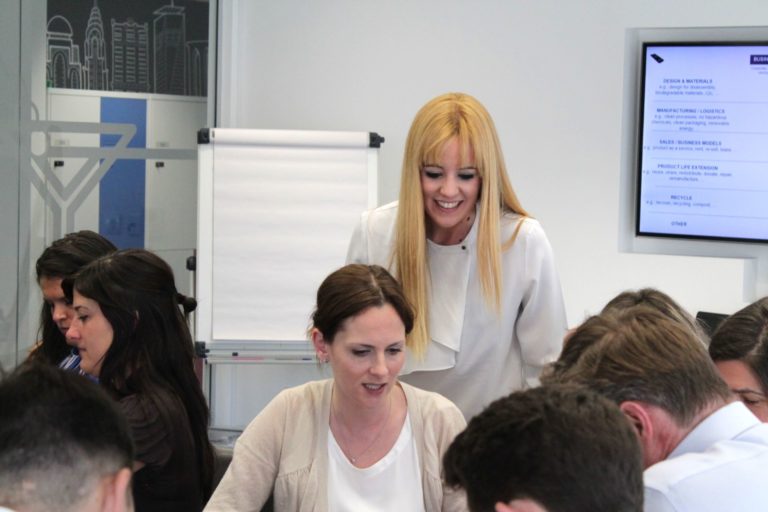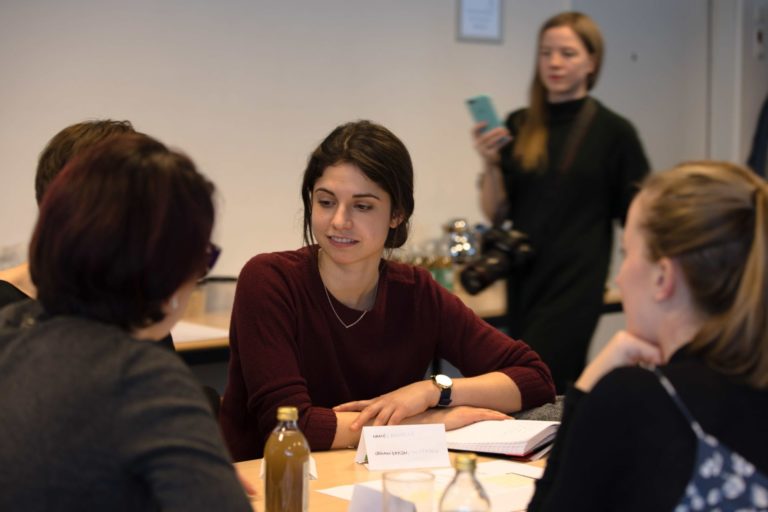The Circular Economy Club (CEC) will celebrate its inaugural “Circular Cities Week” event from Oct. 28–Nov. 3, 2019. The goal of the event: to push, with a united voice, for the design and implementation of circular economy strategies in cities worldwide. This effort coincides with the United Nations World Cities Day.
“Circular Cities Week” is slated to be a decentralized, global event. During the week, CEC city organizers in more than 100 cities will organize workshops — with tools provided by the CEC — to identify opportunities and next steps to encourage implementation of the circular economy in their cities. This process will bring in stakeholders from city governments, private and nonprofit sectors, and academia.

What Is a Circular City?
Populations in cities are growing worldwide. According to the World Economic Forum (WEF), by 2050, around 70% of the global population will live in cities. However, urban ecosystems are suffering the consequences of the linear economy, in which we take-make-waste materials in a process that damages our ecosystems and generates economic losses. Under the linear system, cities consume around 75% of natural resources, produce over 50% of the waste generated globally, and emit over 60% of greenhouse emissions. The circular economy concept provides the world with an opportunity to rethink how we design systems and produce and dispose of products to ensure the long-term well-being of all species and our urban citizens.
The circular economy is an economic system aimed at minimizing waste and making the most of resources. A circular system minimizes resource input, waste, emission, and energy leakage by slowing, closing, and narrowing energy and material loops. We can achieve this through long-lasting design, maintenance, repair, reuse, remanufacturing, refurbishing, and recycling. This regenerative approach contrasts with the traditional linear economy, which has a ‘take, make, dispose’ model of production.
Moreover, the fact that citizens and organizations within cities are close in distance facilitates the logistics of recovering materials after their use.
At a city-level, the circular economy approach includes urban mining, through which the production system can recollect and incorporate all sorts of materials. Moreover, the fact that citizens and organizations within cities are close in distance facilitates the logistics of recovering materials after their use.

Cities are major engines for employment and economic growth, and therefore have the responsibility to drive the transition to the circular economy. City leaders worldwide can find support for achieving their climate goals in this economic model. The circular economy provides the opportunity to create sustainable cities that encourage new circular business models and generate value from waste.
Examples and Case Studies
There is not yet a living circular city per se, but a number of cities, particularly in Western Europe, demonstrate commitment to becoming circular. For example, the London Waste and Recycling Board (LWARB) recently launched their Circular London strategy. This targets several sectors including textiles, food and construction with suggestions and opportunities to engage with and become circular. Other cities, including Amsterdam, Netherlands and Bilbao, Spain, have performed a circular city scan to determine the amounts and types of the most polluting material inputs (energy, water, etc) as well as the most polluting outputs (types of waste). After performing a city scan, they have suggested a number of circular strategies to reduce the amount of natural and raw resources needed as well as how much waste and emissions are generated. Other cities including Rotterdam, Haarlemmermeer, and Glasgow are also in the preliminary phases of implementing circular economy strategies.

Goals of Circular Cities Week
The condensed timeframe of “Circular Cities Week” encourages a sense of urgency and purpose designed to help stakeholders identify opportunities, challenges, and next steps for supporting the development of circularity at the city government level. The objectives of the week are twofold:
- Create an open-source report of challenges, opportunities and next steps for all the participating cities
- Convince and support city governments to publish a local circular economy strategy plan with clear goals for their city
“We hope CEC ‘Circular Cities Week’ empowers circularity supporters with tools to lead circularity efforts in their region,” said Anna Tari, CEC founder.











